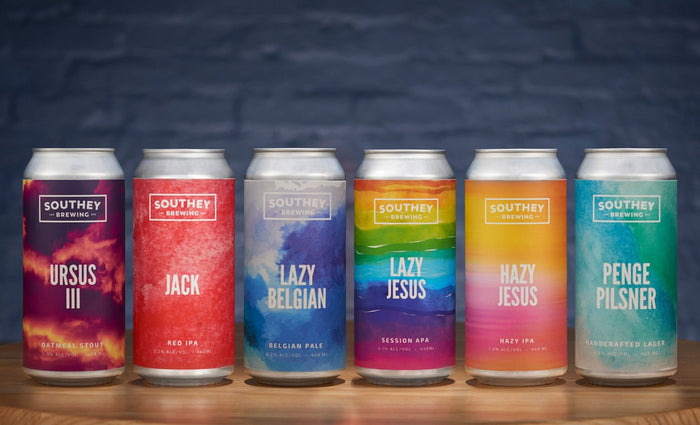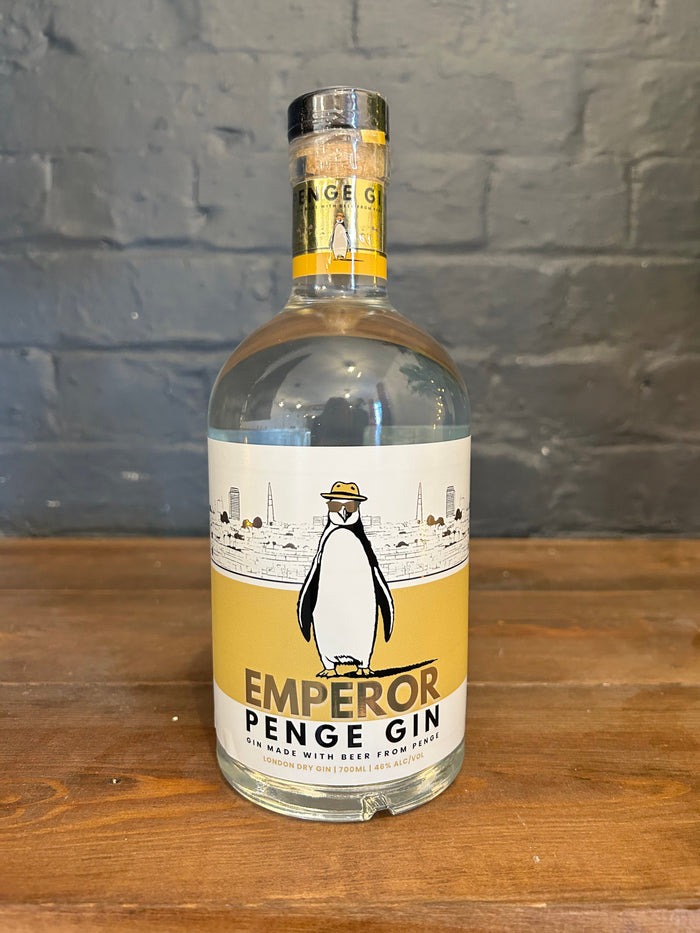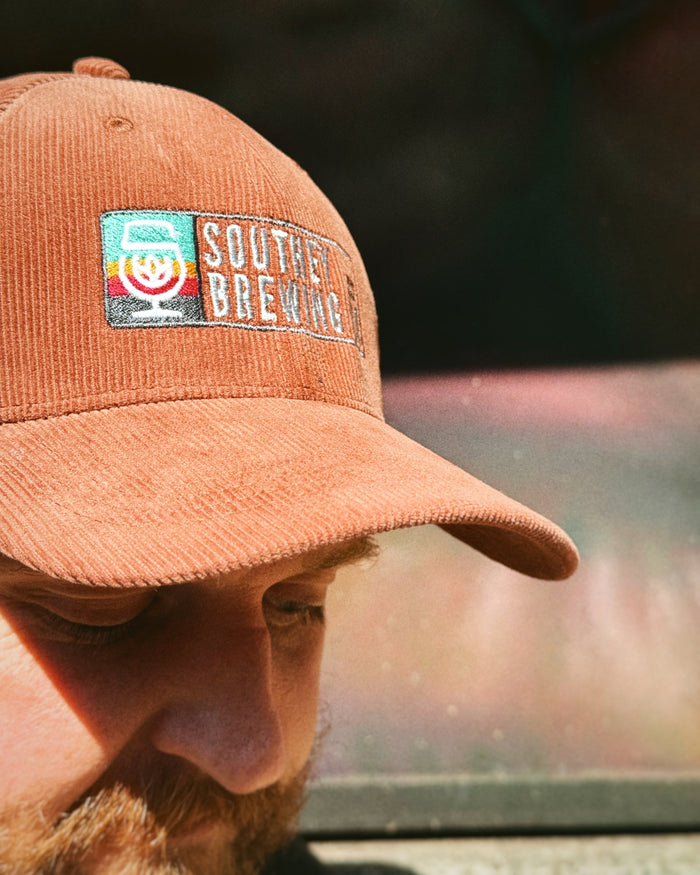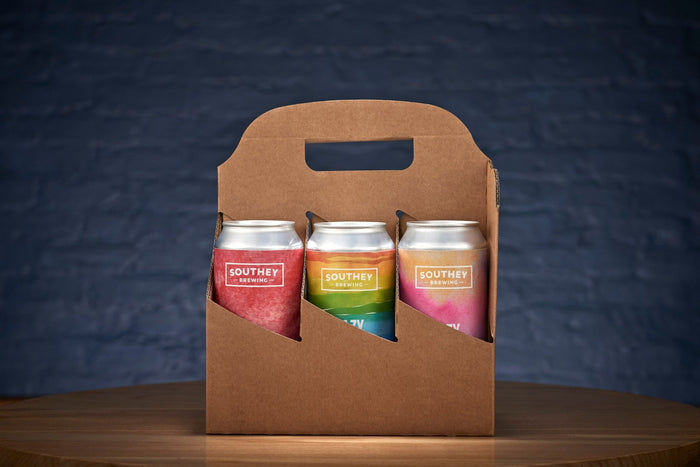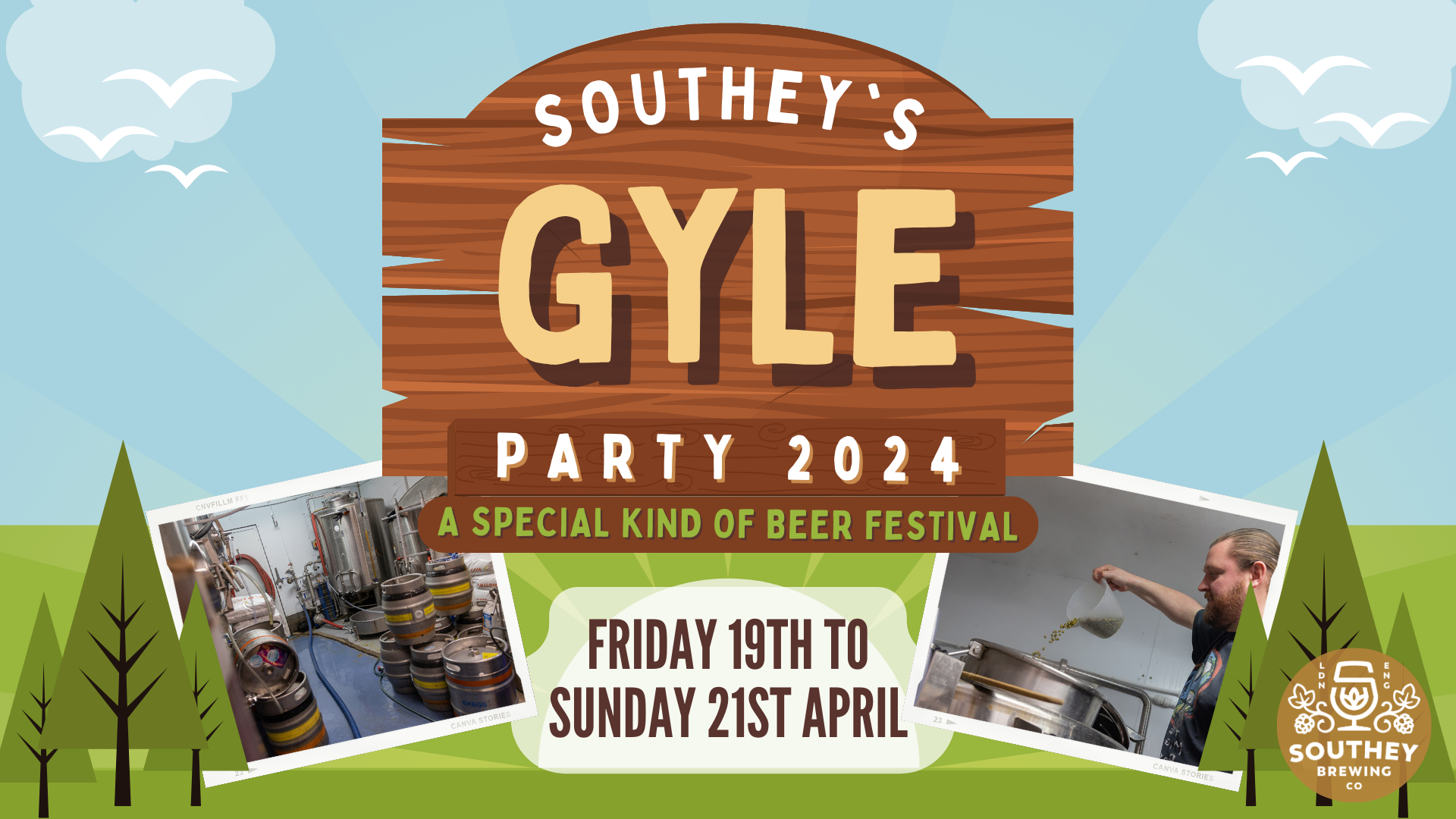

· By Adam Croft
The Gyle Party 2024 What We Did, and How We Did It
Conversation in the brewery sometime early 2023:
Sam: So we have 9 keg lines and 3 cask lines in the taproom, right?
Adam: Yep
Sam: Do you think we could brew 12 beers in one day, one for each beer line?
Adam: Surely it can’t be done?
Sam: But what if it could?
Adam: Well, there’s only one way to find out!
And just like that an idea was born.
Last year we hosted our very first Gyle Party. One brew day, one mash*, 12 beers at the end of it!
We enjoyed it so much and we think you did too so we thought we’d make it a yearly tradition.
In this blog I’ll talk through the process from how we developed the idea, through to the logistics of the mammoth brew day, with little clues about how the beers turned out (although I won’t say too much about that, you’ll have to come and try them for yourself).
I’ll talk through what we did, and how we did it. I’m still working on the answer as to why we did it, but I think that answer will come when I see the taproom full of excited, inquisitive and confused faces eager to try these gyle party beers!

Developing the Idea - From Little Alecorns, Mighty Oak Beers Grow
What was our aim here?
To make 12 distinctly different beers from the same mash - the mixture of malted barley grain that makes up the base of the beer - and hops - as with last year American Mosaic - as a means to highlight how variations in strength, yeast and dry hopping, can create vastly different results.
The first thing we needed to look at was how we were going to split the base beer and think about what beers we wanted at the end of it. There were a million different directions we could take, so narrowing it down was the first challenge. We decided to split it three ways in terms of strength, giving us three stronger beers, four mid range, and five at a more sessionable strength.
The logistics of creating beers of a different strength from the same base is really quite simple. You start by making the base beer as strong as your strongest beer needs to be, then it’s as simple as adding more water at each stage to bring the abv down to the desired level. In brewing this is known as ‘liquoring back’.
Yeast was then the next thing to consider. Different yeasts can give very different results, from flavour to dryness to sweetness to actual levels of strength, and it’s these yeast differences that will give the most noticeable variations between the beers. There were a few yeasts that were definitely to be included. Anyone who knows Southey well will know we love a Belgian, so that was a must! Then there’s a few yeast strains we use quite regularly that had to be included. These are things like SO4 (classic english ale yeast), LAX (clean west coast yeast), and SATURATED (modern NEIPA yeast), which are used in most breweries for the majority of beer styles. Which then left a couple of beers to experiment with, trying a champagne yeast in one, and Voss Kveik in another.
The yeast is added into the fermentation vessel with the base beer, or in brewing terms - wort. This is where it reacts with the sugar in the wort to create alcohol. So essentially, every beer was the same going into each fermentation vessel, just with more or less water added, and it’s the reaction between the yeast and the wort that creates the different end results.
And last but by no means least, we needed to think about hop additions. This is where we could have easily gone crazy, and chucked different hops into each beer, changing the profile of each split dramatically. We decided against this however, as we wanted to have a clear comparison between each beer, and if we were to change too many variables then the comparisons would become too muddled.
We went for Mosaic as our main hop. It’s a great versatile hop that lends itself perfectly to being used for bittering, aroma and dry hopping (anyone who’s tried our all Mosaic beer Penge Pride will agree with us here!). Then as a point of comparison in a couple of the beers we decided to dry hop with Citra, which blends very well with Mosaic.

Note: Dry hopping is when hops are added to the ‘finished’ beer after fermentation to cold-steep for extra flavour. This provides a different flavour profile to boiling your hops (think Cold Brew vs Espresso Coffee) and layers over the base beer rather than drastically affecting its profile.
For you beer nerds out there, here’s a snapshot of the spreadsheet we were painstakingly mulling over:

And that’s that in a nutshell. A seed of an idea developed into a fully fledged recipe and game plan for the big brew day!
The Big Brew Day - The Big LeBrewSki
The day before the big brew day was spent cleaning, cleaning and more cleaning. We needed somewhere for all this beer to go, and for the most part it was to be split into smaller fermentation vessels. As many of you will know from peering through our brewery doors while enjoying a pint, we are somewhat limited in terms of space, so finding a place for all of these fermenters to live was gonna be fun.

When the brew day came, everything was cleaned, cleared and prepped, ready to go. Once the team was assembled, bleary eyed and coffees in hand, we set to mashing in at around 9am. We were aiming for a base beer of around 7%, using mainly pale malt, and a small amount of cara malt for colour and body.
Mashing in is the first part of the brewing process. Hot water and grain are added into the mash tun, and left to sit for an hour, allowing the hot water to extract the fermentable sugars from the grain. Once this has happened, the sugar solution is pumped from the mash tun into the kettle (which does exactly what you think), passing more hot water over the grain bed to pick up remaining fermentable sugars. This is called the sparge.

Sparge complete, this left us with 800L of beer, or wort, in the kettle. This was then boiled, and our bittering hops were added. Hops added at this stage provide little to no hop flavour or aroma, but are used to bitter the beer. The majority of beers will have some bittering hops added, but this tends not to be the case for NEIPA style beers. We wanted to include a NEIPA as one of our 12 beers, so to achieve this using this wort, we split off a small portion of the wort before adding the bittering hops, and boiled this separately, with no bittering hops added.
The main bulk of the beer in the kettle was then boiled for 30 minutes, then the kettle was turned off.
This was where the fun started! Once boiled, it was time to start transferring the beer into its separate fermentation vessels. Starting with the three strong beers, all going into small 60L fermentation vessels, where yeast, and any dry hopping was added. Then water was added into the kettle to bring the abv of the base beer down.
We only had one minor disaster on the brew day, which is less than I was expecting. When tightening the tap on the fermentation vessel that was meant for the Brut IPA, I managed to snap it clean off! After a few minutes of attempting a quick fix, it clearly wasn’t going to happen. Luckily we had one spare fermentation vessel, although it was only 30L, or one kegs worth in size. So it now turns out the Brut IPA is super, super limited, and tastes amazing, so you better get down early to try that one!

Once the next four beers were split into their respective fermentation vessels, yeast added, and dry hopping complete, it was time to add more water to the kettle one final time to bring the abv down again for the session beers. This left us with around 600L of beer that would end up at around 4%. 150L of this was transferred into our last plastic fermentation vessel and lager yeast added, with the remaining 450L being transferred into one of our main tanks, to ferment together, and be split into different beers post fermentation.
By the time everything was finished, and we were sitting down in the taproom pint in hand, it was just before 6pm! 9 hours to create 12 beers is pretty good going I’d say, wouldn’t you!? Now it was time to let the beer gods do their work, and keep our fingers crossed while we waited to see how they all turned out!
The Final Steps - Last Orders of Business
What followed the next week was lots of tasting, dry hopping and racking of each beer into kegs. The four beers in the main tank were to be split two into kegs and two into casks. The first of the two cask beers was 3.2% mild. This was created by adding water directly into the cask with the beer to bring the final abv down, and also caramel colouring added to darken the beer. This was a technique that was traditionally used to darken beers, as they were considered more premium and desirable. The same principle was used for the other cask beer, minus the caramel colouring, which was racked into cask for a pale at 3.8%.

The remaining two beers were then transferred into separate vessels, one dry hopped with Citra, and one dry hopped with Mosaic. This will be a really interesting comparison, as they are the exact same beer in every aspect other than dry hopping, so a great way to see differences in hop profiles.
How did they all turn out?
Well, that would be telling wouldn’t it. Let’s just say we’re all pretty damn pleased with ourselves here at Southey, and can’t wait for you all to come down and try as many of the twelve as you can manage, whilst drinking responsibly of course. See you there!
1 comment
-
Wow, I found that fascinating. I don’t even drink beer, but if I was in the vicinity I wound definitely try some. Nice blog Adam xx
Karen Croft on

